- Home
- Tom Clancy
Battle Ready Page 33
Battle Ready Read online
Page 33
At this point, the truth gets murky. Tempers flared. Reason got tossed aside. The big question: Did the mobs rise up spontaneously? Or, as UNOSOM claimed, did Aideed’s people plan the ambushes? Aideed’s faction—and most other Somalis—claimed that the attacks were spontaneous responses to a real threat to the radio station that was compounded by the killing of the Somali. (It’s very possible that the mobs had been urged on by Aideed’s leaders, though without advance planning.)
Aideed didn’t help matters the next day when in a radio address he praised the people who had risen up to fight the foreigners (further provocation and an admission of guilt in the eyes of UNOSOM). Yet, at the same time, he offered a surprisingly reasonable proposal for an impartial inquiry into the causes of the confrontation, followed, hopefully, by a peaceful resolution.
UNOSOM II would have none of that: Aideed and his lieutenants must be brought to justice; and Admiral Howe placed the $25,000 reward on Aideed’s head.
A series of battles followed. UNOSOM conducted air strikes; the Aideed forces executed ambushes. The fighting escalated until the U.S. sent in special operations forces to capture Aideed and his chief lieutenants. They conducted several operations, with mixed results, until the tragedy of October 3 brought Bob Oakley back to Somalia.
MEANWHILE, Oakley and I kept in close touch with Ambassadors Lissane and Menharios, the Ethiopian and Eritrean liaisons who were our contacts with Aideed. We waited anxiously for word about the prisoners.
Word finally came that Aideed had agreed to release them. However, he would only release them directly to us, not to UNOSOM.
This was not a good idea.
Since Oakley knew a release to us would create further problems with UNOSOM, he worked out an arrangement to have the prisoners turned over to the Red Cross. To emphasize our noninvolvement and to minimize our media presence, he had us pull back to the airport. As soon as word came that the prisoners were released, we’d leave Somalia for a few days and return after the news flurry had calmed down. The moment that Durant and Shantali were released, we boarded our C-20 and headed for Asmara, Eritrea, Addis Ababa, and Cairo, for meetings with President Isaias of Eritrea, President Meles, and the Egyptian Foreign Minister. (The Egyptians had troops in Somalia; the refueling stop in Cairo was a good opportunity to connect to senior Egyptians.)
We returned to Washington on the sixteenth of October. Next day at the White House, we briefed the National Security Adviser, the Secretaries of State and Defense, and the ambassador to the UN, among others. Later, at the Pentagon, we briefed the new chairman of the Joint Chiefs of Staff, General Shalikashvilli. Though Oakley presented both a superb description of the situation and a clear plan for our best possible way through the Somalia mess, I had a foreboding that the Washington leadership was looking to disengage from Somalia and write the country off. Despite my misgivings, we were given the go-ahead to pursue Oakley’s plans.
A few days later, we were off again to Somalia.
After another stop in Addis to see President Meles, we flew on to Mogadishu, arriving on the first of November for a planned visit of four days. Our primary purpose in Somalia was to put in place a revised plan we had worked up since our last visit. It called for reestablishing the Security Committee; reestablishing a viable police force; getting the cease-fire and disarmament agreements back in place; getting the factions back to the process of forming a transitional government; involving in the process other nations and political organizations in the region; scheduling another conference in Addis; establishing agreed-upon sectors and security zones in Mogadishu to prevent confrontations; and several other proposals designed to put the humanitarian, political, and security situations on track.
During an intense four days of negotiating, we met with the UNOSOM leadership, the other faction leaders, and various Somali groups seeking agreement on our proposals; and we successfully persuaded everyone involved to accept a renewal of our original mission.
Sticking points remained—chiefly, the question of the UN-held prisoners and the question of Aideed’s war crimes guilt.
Aideed had accused UNOSOM of abusing the prisoners they were holding on the island; and wanted their release. In fact, there were some health problems among the prisoners (who now included Osman Atto, my contact from the UNITAF days, who had been snatched up in a Special Operations roundup). Eventually Aideed got his wish, and they were released.
Since the question of Aideed’s personal guilt was still far from being settled, we decided to continue our policy of keeping distant from him. For the time being, we dealt only with his lieutenants.
WHEN WE LEFT, we made the regular round of African stops (adding Kampala, Uganda), returned briefly to Washington, and were back in Somalia by mid-November—this time, for direct talks with Aideed. A new Security Council resolution (Resolution 885), accepting Aideed’s party as legitimate, had eased tensions with Aideed and greatly lessened the danger of continued violence. It was time to bring him into the process and persuade him to sign on to Oakley’s program.
Aideed (still UNOSOM’s most wanted man) was hiding out in the labyrinths of Mogadishu. Getting to him was not going to be easy.
On the day of the meeting, our armored SUV was escorted by Marines to the old UN headquarters, where we were to be turned over to Aideed’s security. As we were waiting for Aideed’s gunmen to appear, a large, excited, and very curious crowd gathered around us. Though they made our Marine security nervous, they didn’t actually threaten us.
We soon had other things to think about, when Aideed’s hard-looking, heavily armed fighters came speeding into the intersection, hanging from technicals. Their leader was the largest Somali I’d ever seen, at least six and a half feet tall with bulging muscles. A man of very few words, he directed us to pull our vehicle between the technicals; and we raced off at high speed through a maze of back alleys and side streets. It was like a movie: Keeping up with the speeding technicals required blasting through intersections, countless near misses, and breathtaking two-wheel turns.
We suddenly found ourselves rushing into a large plaza, heading straight toward a screaming multitude of Somalis.
“What do you think?” Bob Oakley asked.
“Ambassador,” I said, “they’re either going to kiss us or eat us.”
As we got closer, we realized they were actually cheering us. The gathering in the plaza had obviously been staged by Aideed.
Eventually, we turned into a compound and came to a stop in front of Aideed’s temporary headquarters, where his chief lieutenants and a broadly smiling Aideed were standing ready to greet us. A bank of cameras off to the side videoed every move. As we stepped out of the SUV, the giant, taciturn security goon came up and put together what for him must have been a major speech. “No more shooting,” he said, with evident emotion, grabbing me by the hand. “No more. Too many people will die.” He had clearly had his fill of fighting.
“We’ll all do our best,” I answered, as the hugely grinning Aideed wrapped his arms around me like a long-lost relative and then ushered us down the ranks of his officials for their greetings. I hoped the cameramen didn’t catch all that. Taking photo ops with Aideed would not make us popular back home (where the media had followed UNOSOM’s lead in demonizing him).
Inside the headquarters, we followed Aideed into a large conference room. His party’s banners were hanging on the walls; pens and stationery with his logo were neatly placed at each seat. After an exchange of small talk, we got down to business with a group of people who were surprisingly somber. I’d expected them to be upbeat at the very least; and I wouldn’t have thought twice if they’d been gloating. They’d been hit hard, but had hit the U.S. and UN even harder; and now we were again treating them like leaders with a legitimate place in the political process. And yet they did not rejoice in their triumph; they were subdued and solemn. They recognized the terrible tragedy we had all suffered. It was clear that the loss of ten thousand Somali lives during the past four
months was weighing heavily on all of them.
Aideed maintained the serious tone—though without altering his long-held positions: The release of the UN-held prisoners was still a pressing concern, and so were the big questions about his own status and UNOSOM’s unceasing accusations against him. He made it abundantly clear that UNOSOM and the Secretary-General were as evil in his eyes as he was in theirs (though he pointed out that he did not oppose the UN itself). He welcomed the U.S. back into the peace process, and would further welcome an independent commission to look into the causes of war—headed by former President Jimmy Carter and with members who were not appointed by the UN Secretary-General.
Following an in-depth debate of the program Oakley had put together earlier that month, Aideed gave it his reluctant consent, adding that he hoped to work within the earlier Addis agreements. Oakley’s policy was correct, he said in conclusion: Governing Somalia should be left to the Somalis.
What form that governing might take still remained a very open question, as was the part the UN and the U.S. would take in the process of answering it.
BEFORE WE LEFT, I wanted to satisfy my curiosity about the fight on October 3 that became known as the Battle of Mogadishu (dramatically captured in the book and movie Black Hawk Down).
“Could you tell me the story from your side?” I asked Aideed.
He was more than willing to do that.
As he began his account, his respect for the military skill of the special operations force—“those dangerous men at the airfield,”67 he called them—was obvious.
The special operations forces had focused their attacks on Aideed’s meetings with his top staff. As a protective measure for his meetings, Aideed had ordered machine guns and RPG launchers to be positioned on neighboring roofs, with orders to concentrate fire on the helos if the Americans attacked. He knew American forces would rally around a downed helicopter and be easier to fix in the fighting. He had furthermore put out a standing order to attack any reaction force coming out of the airport. The UNITAF Marines had multiple reaction forces that could respond from several directions, but now the principal reaction force always came from the airport. For that reason, it was important to cut that off if he was attacked by the special operations forces.
Aideed’s tactics had all been purely defensive . . . but that’s not the way they’d played on television. Even worse in the eyes of the world, they’d worked.
This did not excuse Somali atrocities; and Aideed acknowledged that no apology could make up for Somali mobs brutally dragging dead soldiers through the streets. But he also was careful to point out that he had immediately taken control of the prisoner, Warrant Officer Durant, and had adhered to Geneva Convention requirements in his treatment of him.
It was obvious that there were two widely different versions as to what happened and who was responsible for the violence. Even investigations and inquiries have presented different views.
Our return ride to the rendezvous with our Marine security force took us through another screaming crowd. Soon after that, we returned to the States.
And so my practical involvement in Operation Continue Hope, as the U.S. had named the UNOSOM II phase, ended.
In the coming days, Oakley was busy planning the Addis conference and working out implementation of his overall program. Though he asked me to be ready to return, the focus was shifting from security (which had been my responsibility) to politics and humanitarian relief. In his mind, the security situation was under control.
I returned to Quantico to watch developments from there.
It quickly became clear that the Clinton administration wanted out of Somalia. The final nail in that coffin came when they announced that all U.S. forces were to be pulled out by March 1994. In my mind, Oakley had been used to achieve a cease-fire and provide a decent interval to allow the administration to cut its loses and pull out. The U.S. was not going to follow through on the Oakley program to put the peace process back on track.
On a more positive note, at least the fighting had stopped and the ravaged country had a few quiet moments to catch its breath.
As for the question of Aideed’s war crimes guilt: Months later, in February 1994, a UN commission of inquiry into responsibility for the June 5 clash published its findings. It concluded that both sides had been at fault.
I MEF
At Quantico, Zinni received good news: He was slated to take command of the 1st Marine Division at Camp Pendleton the following summer. This was exciting; he couldn’t wait to move on to the division.
He didn’t know that other plans were in the works.
In the early spring of 1994, he was made president of a Reserve General Officer Promotion Board at Marine Corps headquarters. At the conclusion of their work, the board members took their recommendations to General Mundy. When they were done, he asked Zinni to stick around.
“What do you want as your next assignment?” he asked, after all the others had left.
This seemed an odd question, since he had already been told he would get a division command. “Is the question just a formality?” he asked himself.
“I want a division,” he told the commandant, bearing that last thought in mind.
“Which one do you want?”
“It doesn’t matter,” Zinni answered. “Any Marine division is just fine with me.”
At that point, the commandant handed Zinni a folder. “Well,” he said, “I think there’s a division in here somewhere.”
Zinni, who was by then enormously confused, opened the folder: It was a nomination for promotion to lieutenant general and appointment as commander of the 1st Marine Expeditionary Force (I MEF).
He was shocked. He’d just been promoted to major general, and here he was moving immediately to three stars . . . and skipping over division command. That was a bummer; he’d wanted to command a division. On the other hand, it was a very big honor to command I MEF—and also pretty exciting.
Zinni’s recollection of his next moments is blurry. He mumbled his thanks to General Mundy, then left his office wrapped in shocked confusion.
A few months later, in June, he assumed command of the largest Marine operational force, I MEF, at Camp Pendleton, California. I MEF had in its ranks over 45,000 Marines and sailors, with its main components being a Marine division, an air wing, and a logistics group. Units were spread over bases in California and Nevada, but many of its forces were constantly deployed all over the world. The MEF had responsibilities that involved six different Unified and Sub-unified commands from Korea (where they were given a major new commitment), to the Western Pacific, to Latin America, to Europe, to the Middle East, and to the United States itself. During Zinni’s two years in command, the MEF had forces involved in security and counter-drug operations in Central and South America; in humanitarian operations in Africa; in peacekeeping operations in Bosnia; in human remains recovery operations in Vietnam; in sanctions enforcement operations in the Persian Gulf; and in disaster relief and counter-drug operations in the western United States. They were involved in over one hundred major military exercises around the world and in hundreds of smaller training events.
The MEF’s most substantive new effort was a crisis response assignment in Korea. Though the Okinawa-based III MEF already had a commitment there, they were now greatly augmented by I MEF. The new role was particularly challenging in that the joint and combined forces they’d be assigned in their envisioned Korean missions would be significant. According to the war plan, the MEF in Korea would become a combined Marine Expeditionary Force. That is, Zinni would command two Marine divisions—the 3rd Marine Division would be added to his own 1st Division—two Marine air wings, a Korean Marine division, a Korean Army division, and the U.S. Army’s 101st Air Assault Division.
The commander in chief in Korea, U.S. Army General Gary Luck, was a brilliant operator who taught Zinni a great deal about war fighting at this highest level of operations. Fighting a war in Korea would be much like fighting
Desert Storm, but on a much larger scale. The whole business of theater logistics, movement and integration of forces, the relationships between air components and ground components, working with coalition forces, fighting a strategic battle with deep strike and close combat, and integrating all these on a large and difficult battle space, took on for Zinni a new and far larger significance.
MEANWHILE, he continued to exercise his growing skills in peacekeeping and humanitarian interventions. He had become one of the few senior-level military experts on “Operations Other Than War” (OOTW).
For obvious reasons, General Binnie Peay, the new commander of CENTCOM (one of the Unified Command CINCs the MEF answered to), gave the MEF the mission to respond to peacekeeping and humanitarian crises in his theater. To better accomplish that mission, Zinni retooled a major exercise, called “Emerald Express,” to develop his unit’s humanitarian and peacemaking capabilities. Since he didn’t have to worry about tactical-level field capabilities (his MEF had those down pat), he reshaped Emerald Express into a comprehensive conference to address issues like planning, coordination, and integration, especially at the operational and policy levels, and to direct special emphasis to coordination with relief agencies, international organizations, coalitions, and political organizations.
In a short time, Emerald Express became the most significant and effective effort to promote integration of military, political, humanitarian, economic, and reconstruction functions in Operations Other Than War.
Zinni’s growing OOTW expertise brought him to testify frequently before the Senate Foreign Relations and Senate Armed Services Committees. His testimonies on specific interventions (such as in Bosnia), on U.S. humanitarian and peacekeeping policy, and on the nature of OOTWs in general, were not always encouraged by the administration or particularly the Pentagon leadership: General Shalikashvilli, the chairman of the Joint Chiefs, did not relish OOTW missions. Zinni did his best to steer clear of problems with the chairman and other superiors, but he had strong feelings about these missions that he did not hesitate to express. He began to earn a reputation as outspoken—a reputation he thinks is undeserved. He has always maintained he has only done what Marines always do: Tell it like it is.

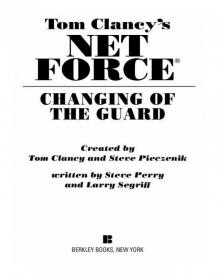 Changing of the Guard
Changing of the Guard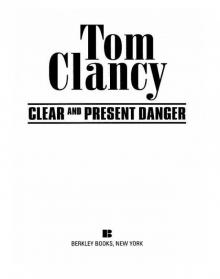 Clear and Present Danger
Clear and Present Danger Hounds of Rome
Hounds of Rome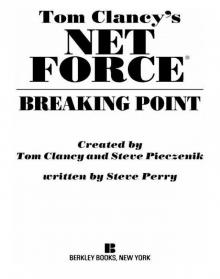 Breaking Point
Breaking Point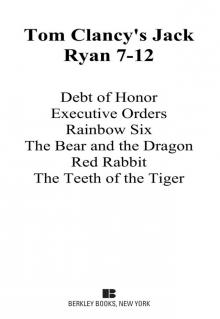 Tom Clancy's Jack Ryan Books 7-12
Tom Clancy's Jack Ryan Books 7-12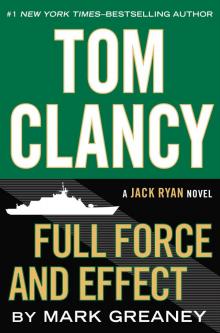 Full Force and Effect
Full Force and Effect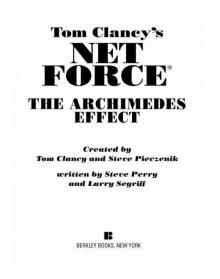 The Archimedes Effect
The Archimedes Effect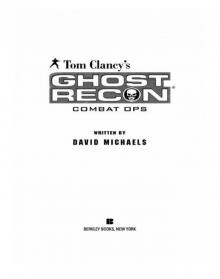 Combat Ops
Combat Ops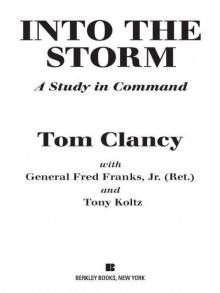 Into the Storm: On the Ground in Iraq
Into the Storm: On the Ground in Iraq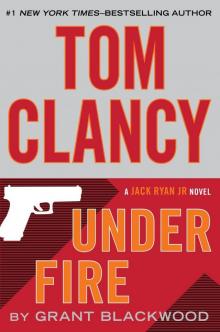 Under Fire
Under Fire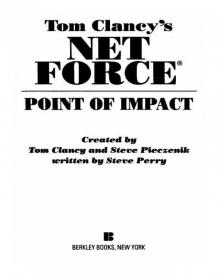 Point of Impact
Point of Impact Red Rabbit
Red Rabbit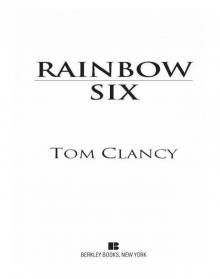 Rainbow Six
Rainbow Six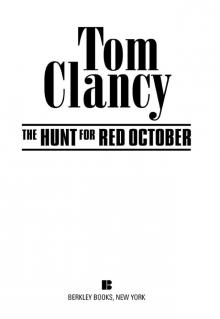 The Hunt for Red October
The Hunt for Red October The Teeth of the Tiger
The Teeth of the Tiger Conviction (2009)
Conviction (2009)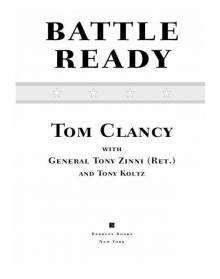 Battle Ready
Battle Ready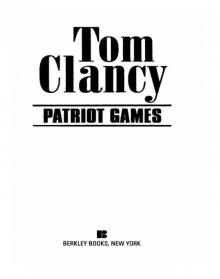 Patriot Games
Patriot Games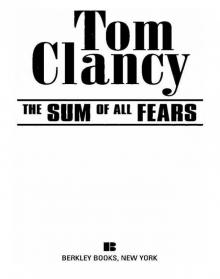 The Sum of All Fears
The Sum of All Fears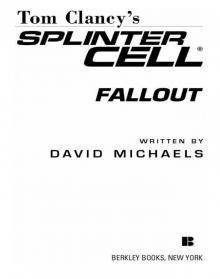 Fallout (2007)
Fallout (2007)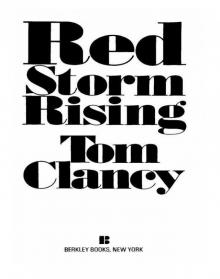 Red Storm Rising
Red Storm Rising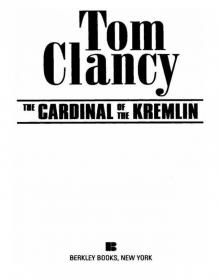 The Cardinal of the Kremlin
The Cardinal of the Kremlin Executive Orders
Executive Orders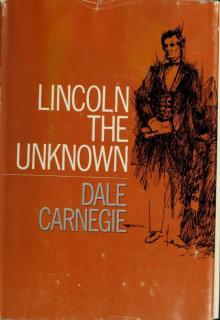 Lincoln, the unknown
Lincoln, the unknown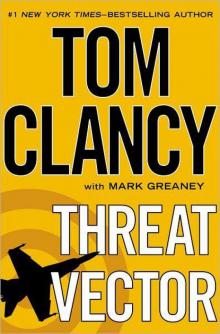 Threat Vector
Threat Vector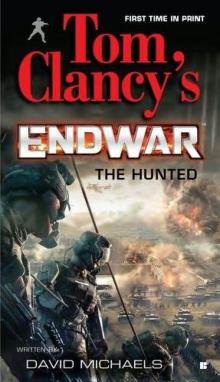 The Hunted
The Hunted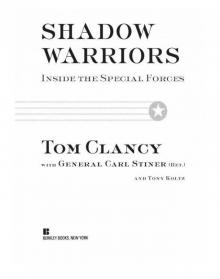 Shadow Warriors: Inside the Special Forces
Shadow Warriors: Inside the Special Forces End Game
End Game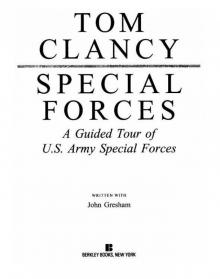 Special Forces: A Guided Tour of U.S. Army Special Forces
Special Forces: A Guided Tour of U.S. Army Special Forces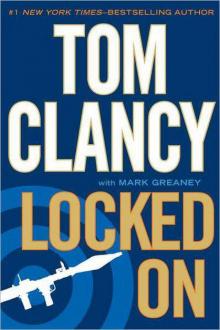 Locked On
Locked On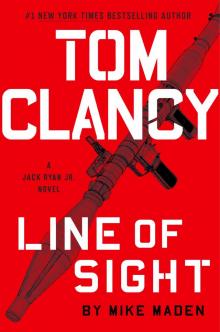 Line of Sight
Line of Sight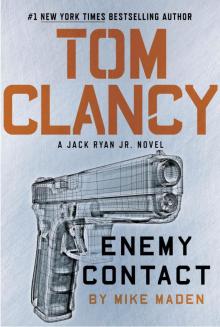 Tom Clancy Enemy Contact - Mike Maden
Tom Clancy Enemy Contact - Mike Maden Fighter Wing: A Guided Tour of an Air Force Combat Wing
Fighter Wing: A Guided Tour of an Air Force Combat Wing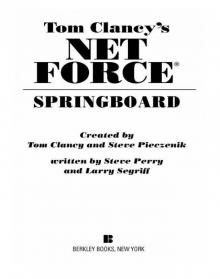 Springboard
Springboard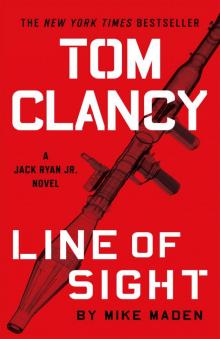 Line of Sight - Mike Maden
Line of Sight - Mike Maden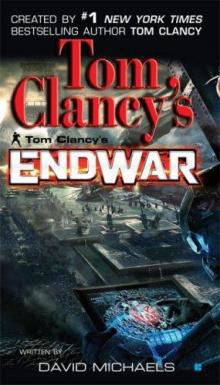 EndWar
EndWar Dead or Alive
Dead or Alive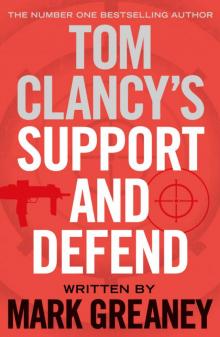 Tom Clancy Support and Defend
Tom Clancy Support and Defend Checkmate
Checkmate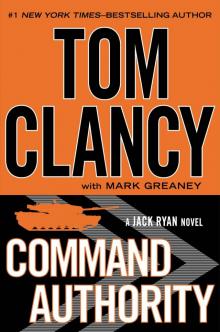 Command Authority
Command Authority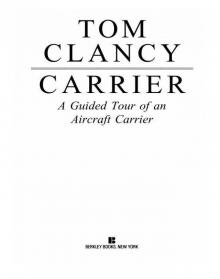 Carrier: A Guided Tour of an Aircraft Carrier
Carrier: A Guided Tour of an Aircraft Carrier Blacklist Aftermath
Blacklist Aftermath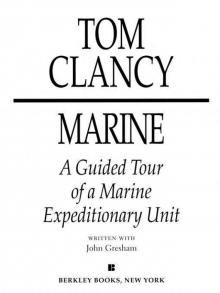 Marine: A Guided Tour of a Marine Expeditionary Unit
Marine: A Guided Tour of a Marine Expeditionary Unit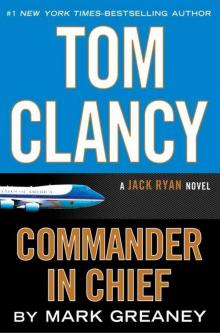 Commander-In-Chief
Commander-In-Chief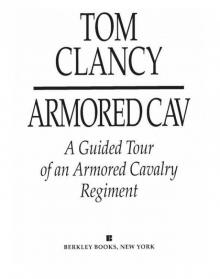 Armored Cav: A Guided Tour of an Armored Cavalry Regiment
Armored Cav: A Guided Tour of an Armored Cavalry Regiment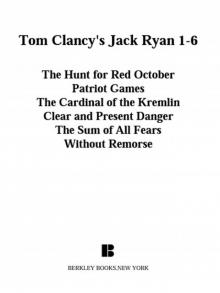 Tom Clancy's Jack Ryan Books 1-6
Tom Clancy's Jack Ryan Books 1-6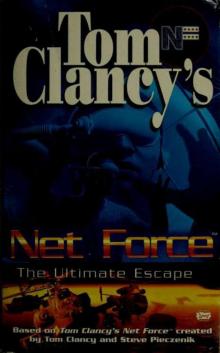 The Ultimate Escape
The Ultimate Escape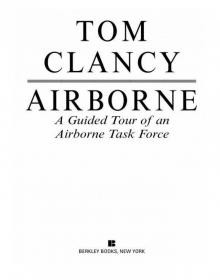 Airborne: A Guided Tour of an Airborne Task Force
Airborne: A Guided Tour of an Airborne Task Force Debt of Honor
Debt of Honor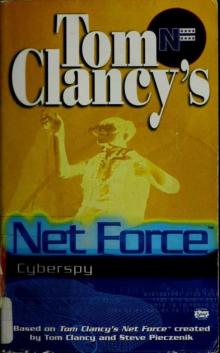 Cyberspy
Cyberspy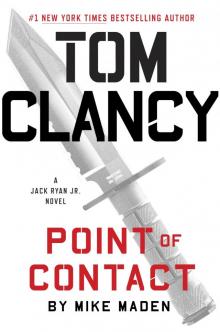 Point of Contact
Point of Contact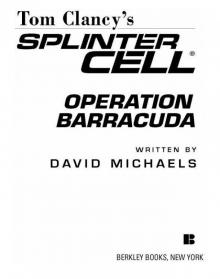 Operation Barracuda (2005)
Operation Barracuda (2005)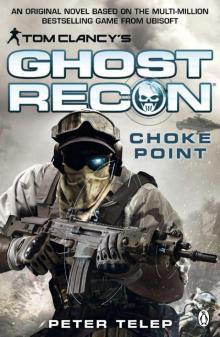 Choke Point
Choke Point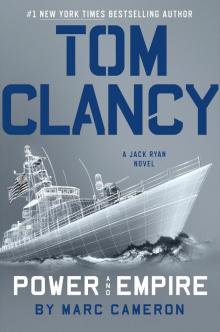 Power and Empire
Power and Empire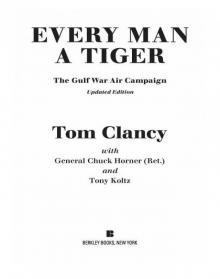 Every Man a Tiger: The Gulf War Air Campaign
Every Man a Tiger: The Gulf War Air Campaign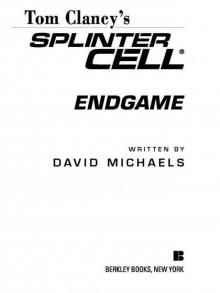 Endgame (1998)
Endgame (1998)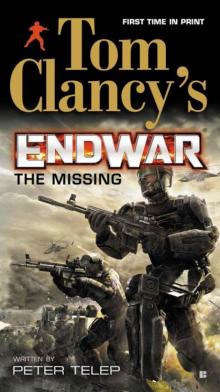 EndWar: The Missing
EndWar: The Missing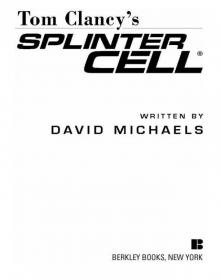 Splinter Cell (2004)
Splinter Cell (2004)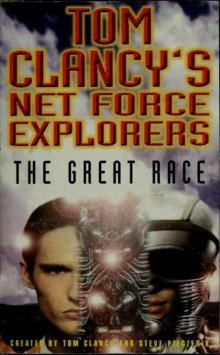 The Great Race
The Great Race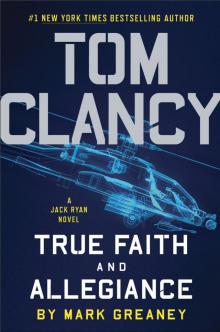 True Faith and Allegiance
True Faith and Allegiance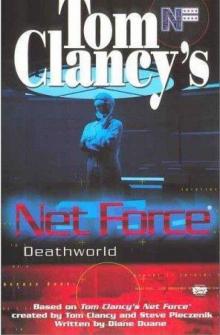 Deathworld
Deathworld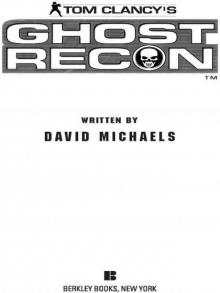 Ghost Recon (2008)
Ghost Recon (2008)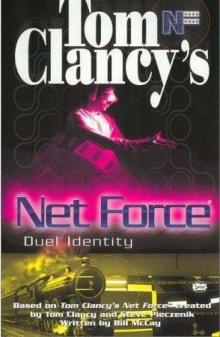 Duel Identity
Duel Identity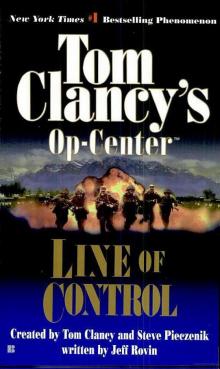 Line of Control o-8
Line of Control o-8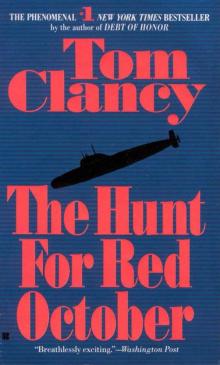 The Hunt for Red October jr-3
The Hunt for Red October jr-3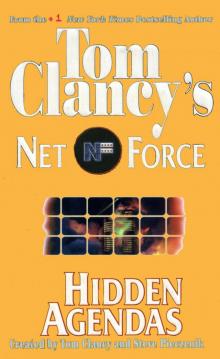 Hidden Agendas nf-2
Hidden Agendas nf-2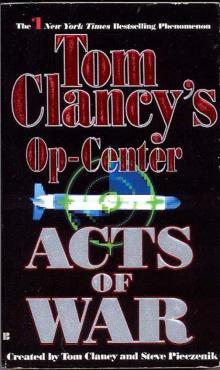 Acts of War oc-4
Acts of War oc-4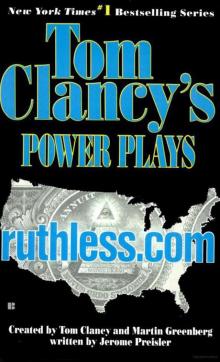 Ruthless.Com pp-2
Ruthless.Com pp-2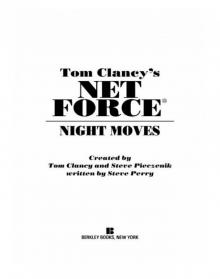 Night Moves
Night Moves The Hounds of Rome - Mystery of a Fugitive Priest
The Hounds of Rome - Mystery of a Fugitive Priest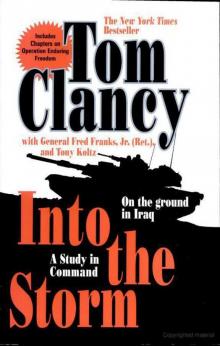 Into the Storm: On the Ground in Iraq sic-1
Into the Storm: On the Ground in Iraq sic-1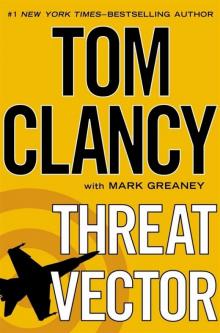 Threat Vector jrj-4
Threat Vector jrj-4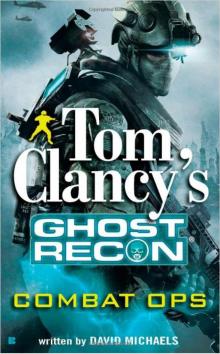 Combat Ops gr-2
Combat Ops gr-2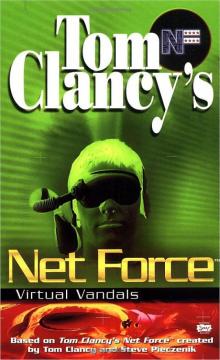 Virtual Vandals nfe-1
Virtual Vandals nfe-1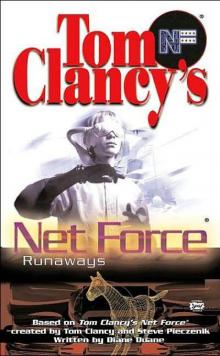 Runaways nfe-16
Runaways nfe-16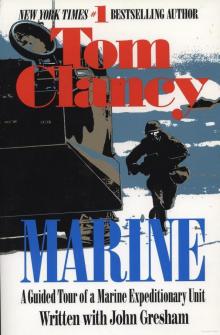 Marine: A Guided Tour of a Marine Expeditionary Unit tcml-4
Marine: A Guided Tour of a Marine Expeditionary Unit tcml-4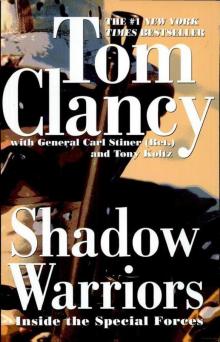 Shadow Warriors: Inside the Special Forces sic-3
Shadow Warriors: Inside the Special Forces sic-3 Jack Ryan Books 1-6
Jack Ryan Books 1-6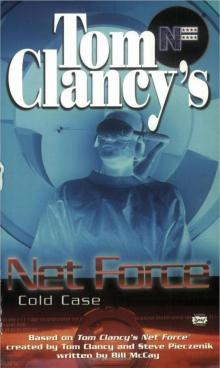 Cold Case nfe-15
Cold Case nfe-15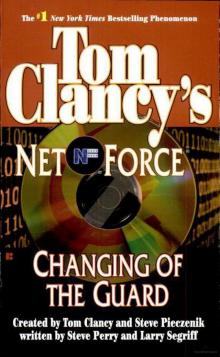 Changing of the Guard nf-8
Changing of the Guard nf-8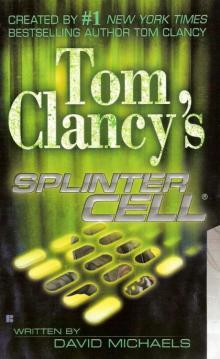 Splinter Cell sc-1
Splinter Cell sc-1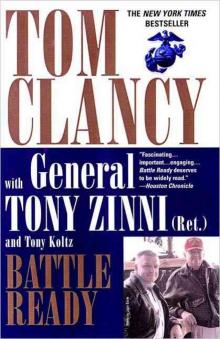 Battle Ready sic-4
Battle Ready sic-4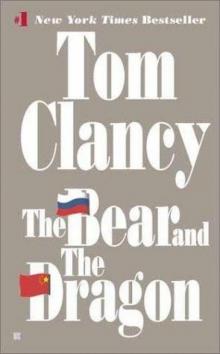 The Bear and the Dragon jrao-11
The Bear and the Dragon jrao-11 Fighter Wing: A Guided Tour of an Air Force Combat Wing tcml-3
Fighter Wing: A Guided Tour of an Air Force Combat Wing tcml-3 Patriot Games jr-1
Patriot Games jr-1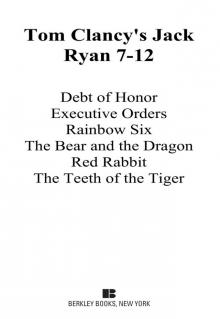 Jack Ryan Books 7-12
Jack Ryan Books 7-12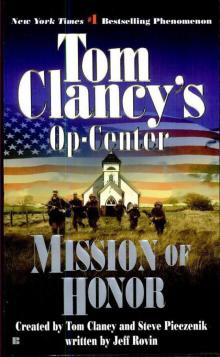 Mission of Honor o-9
Mission of Honor o-9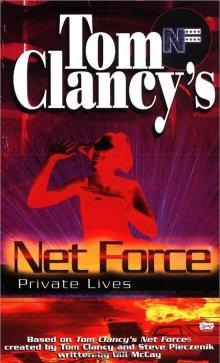 Private Lives nfe-9
Private Lives nfe-9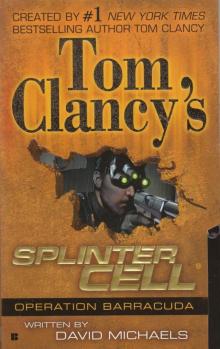 Operation Barracuda sc-2
Operation Barracuda sc-2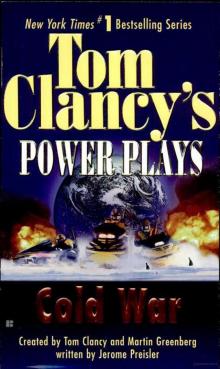 Cold War pp-5
Cold War pp-5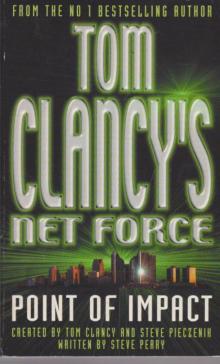 Point of Impact nf-5
Point of Impact nf-5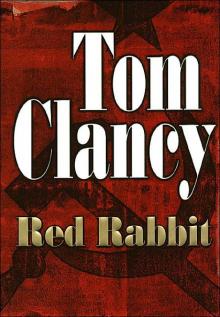 Red Rabbit jr-9
Red Rabbit jr-9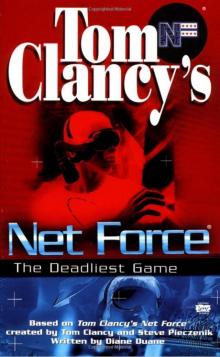 The Deadliest Game nfe-2
The Deadliest Game nfe-2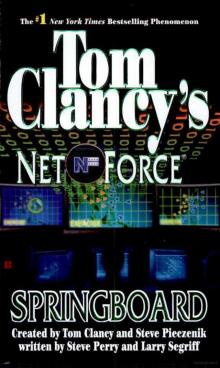 Springboard nf-9
Springboard nf-9 Safe House nfe-10
Safe House nfe-10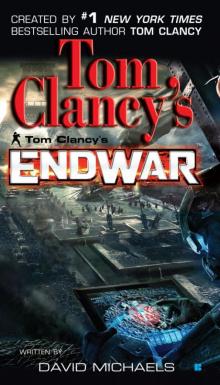 EndWar e-1
EndWar e-1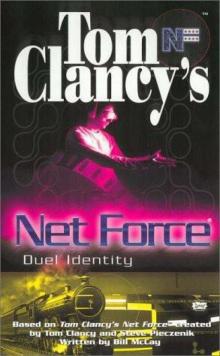 Duel Identity nfe-12
Duel Identity nfe-12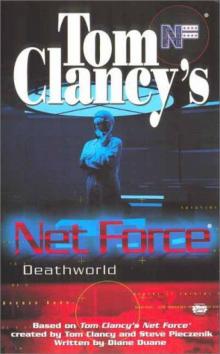 Deathworld nfe-13
Deathworld nfe-13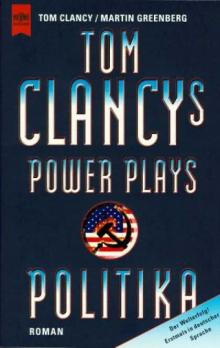 Politika pp-1
Politika pp-1 Rainbow Six jr-9
Rainbow Six jr-9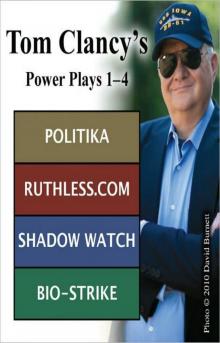 Tom Clancy's Power Plays 1 - 4
Tom Clancy's Power Plays 1 - 4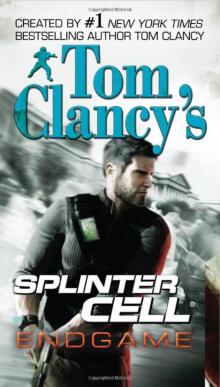 Endgame sc-6
Endgame sc-6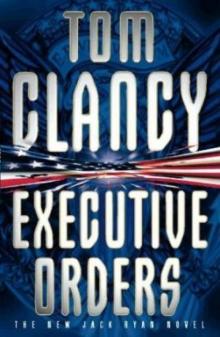 Executive Orders jr-7
Executive Orders jr-7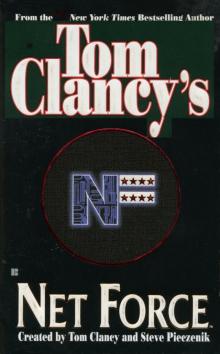 Net Force nf-1
Net Force nf-1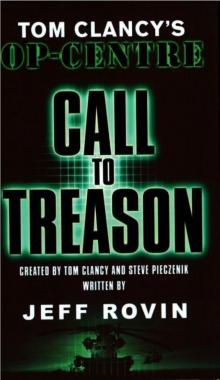 Call to Treason o-11
Call to Treason o-11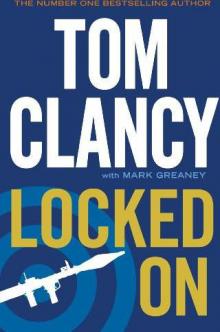 Locked On jrj-3
Locked On jrj-3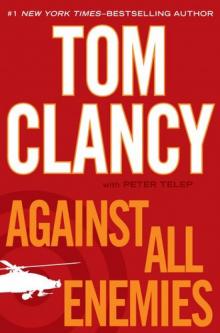 Against All Enemies
Against All Enemies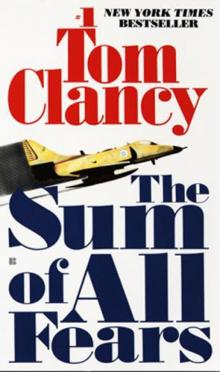 The Sum of All Fears jr-7
The Sum of All Fears jr-7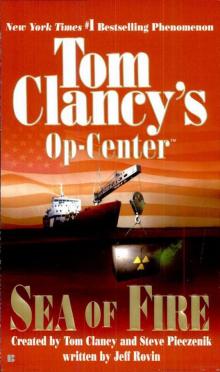 Sea of Fire o-10
Sea of Fire o-10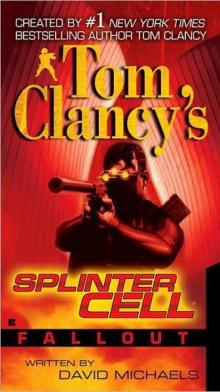 Fallout sc-4
Fallout sc-4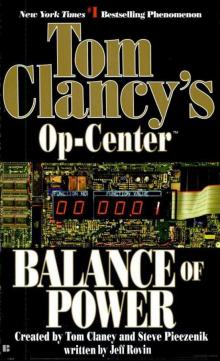 Balance of Power o-5
Balance of Power o-5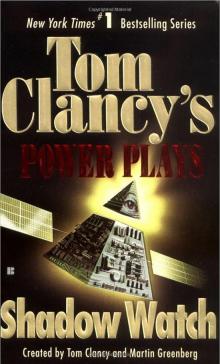 Shadow Watch pp-3
Shadow Watch pp-3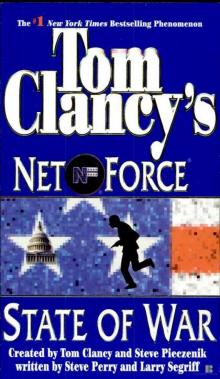 State of War nf-7
State of War nf-7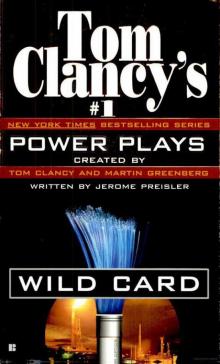 Wild Card pp-8
Wild Card pp-8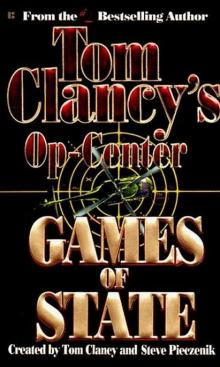 Games of State o-3
Games of State o-3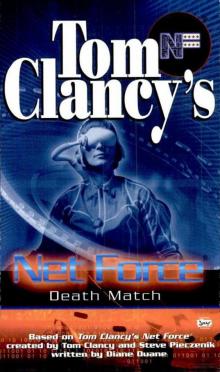 Death Match nfe-18
Death Match nfe-18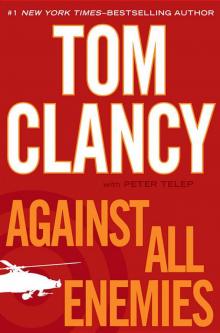 Against All Enemies mm-1
Against All Enemies mm-1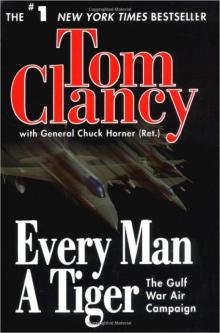 Every Man a Tiger: The Gulf War Air Campaign sic-2
Every Man a Tiger: The Gulf War Air Campaign sic-2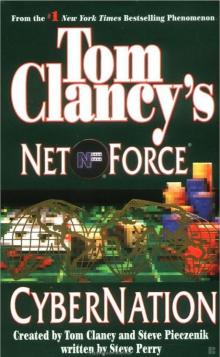 Cybernation nf-6
Cybernation nf-6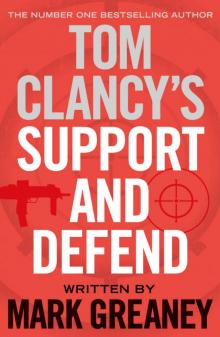 Support and Defend
Support and Defend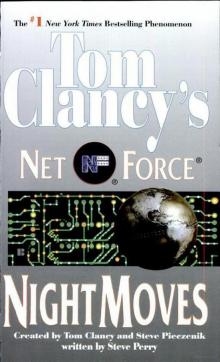 Night Moves nf-3
Night Moves nf-3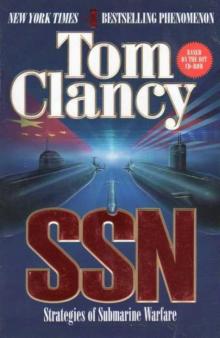 SSN
SSN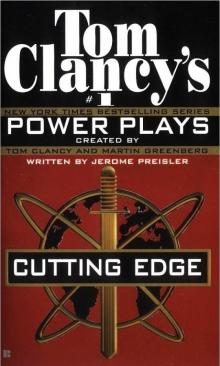 Cutting Edge pp-6
Cutting Edge pp-6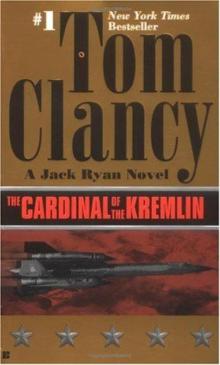 The Cardinal of the Kremlin jrao-5
The Cardinal of the Kremlin jrao-5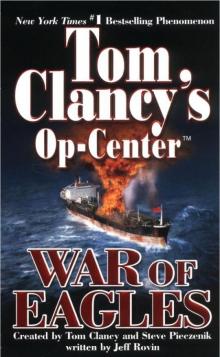 War of Eagles o-12
War of Eagles o-12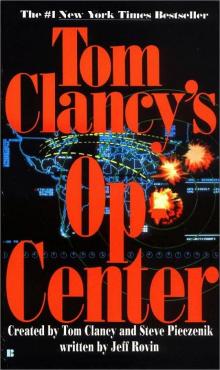 Op-Center o-1
Op-Center o-1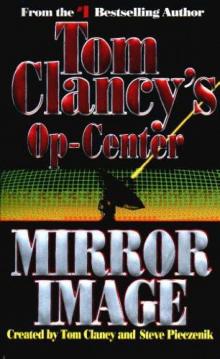 Mirror Image o-2
Mirror Image o-2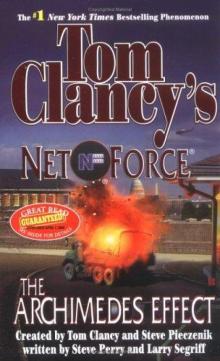 The Archimedes Effect nf-10
The Archimedes Effect nf-10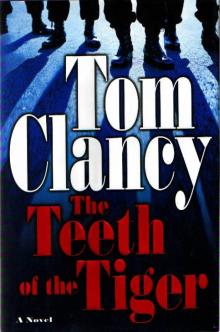 Teeth of the Tiger jrj-1
Teeth of the Tiger jrj-1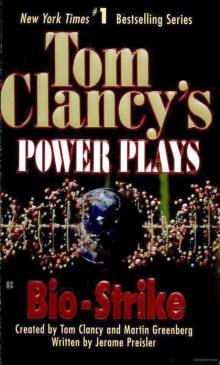 Bio-Strike pp-4
Bio-Strike pp-4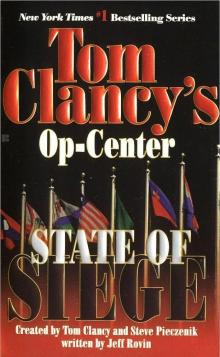 State of Siege o-6
State of Siege o-6 Debt of Honor jr-6
Debt of Honor jr-6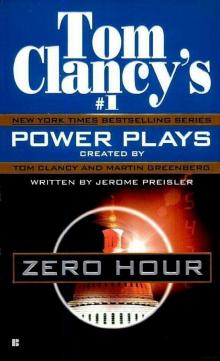 Zero Hour pp-7
Zero Hour pp-7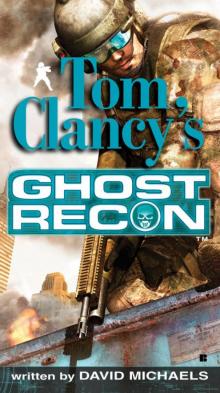 Ghost Recon gr-1
Ghost Recon gr-1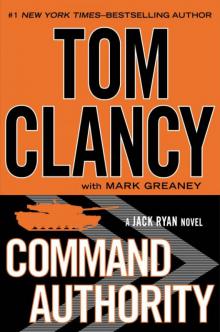 Command Authority jr-10
Command Authority jr-10 Tom Clancy's Power Plays 5 - 8
Tom Clancy's Power Plays 5 - 8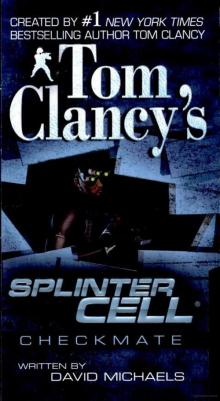 Checkmate sc-3
Checkmate sc-3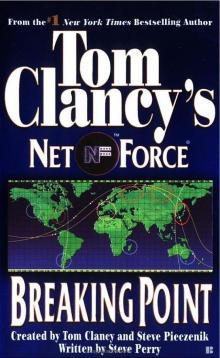 Breaking Point nf-4
Breaking Point nf-4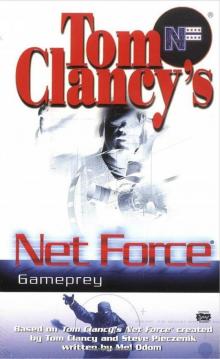 Gameprey nfe-11
Gameprey nfe-11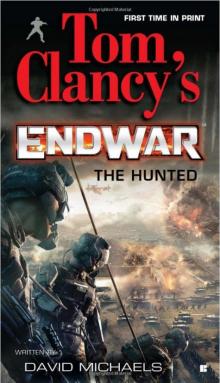 The Hunted e-2
The Hunted e-2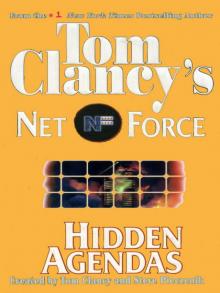 Hidden Agendas
Hidden Agendas Divide and Conquer o-7
Divide and Conquer o-7